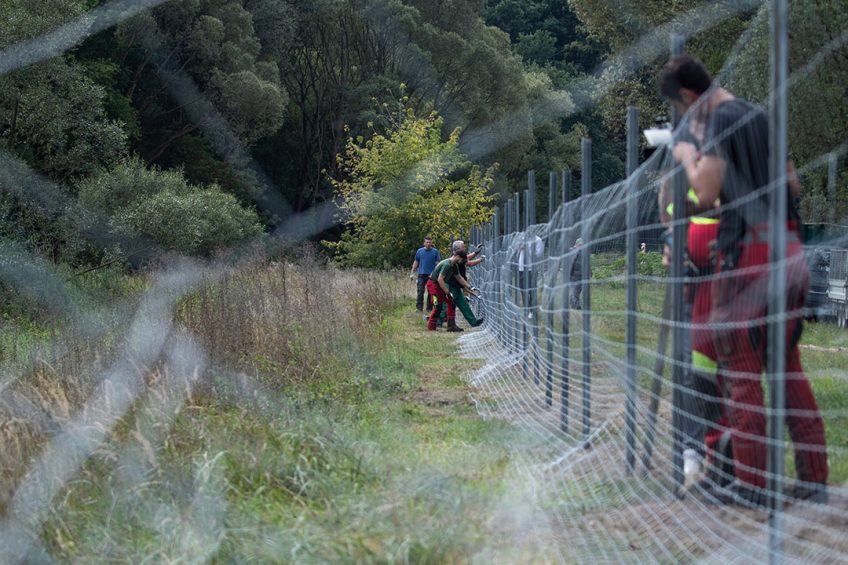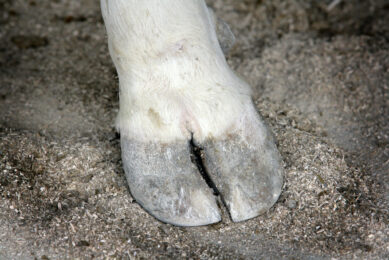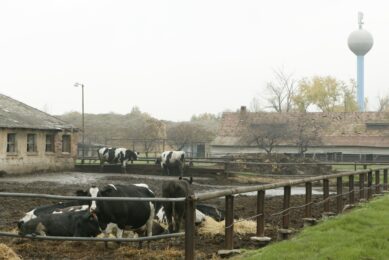Germany’s plan to be ASF-free again

African Swine Fever has been found in Germany’s wild boar population since mid-September. Fighting the virus is mostly up to state and regional authorities. Neither farmers nor hunters are entirely convinced the right approach has been taken.
A lot of overtime – that is certain to be in the future of employees of Brandenburg state’s ministry for Social Affairs, Public Health, Integration and Consumer Protection (in German abbreviated to MSGIV). This ministry is responsible for fighting the African Swine Fever (ASF) virus problems in its wild boar population. The German state of Brandenburg – home to 2,300 pig farms – is directly adjacent to Poland, where the virus has been circulating since 2014. Since mid-September, ASF has also been detected in Germany.
Primary focus: keeping things under control
The main aim at the moment is to make sure the virus stays within the restricted area where it has currently been detected, although that is getting more difficult by the developments of the recent week. Early November, 4 core zones had been established, of which 2 were established in the district Oder-Spree (one of them extending into Spree-Neisse district too). A 3rd was established 60 km to the north in the district Märkisch-Oderland and a 4th in the south in Görlitz, Saxony state, where 1 infected animal got shot. In total, 128 known cases have been found now. The primary focus is on keeping things under control – the next step will be eradication of the virus.
Controlling African Swine Fever
Because of how Germany is organised, Brandenburg state is the first responsible authority. Each individual constituent state has a relatively large responsibility – the coordination of fighting animal health problems is one of them. The practical execution of those plans is allocated to districts (Landkreise in German), the administrative subdivisions of the states. That approach makes sense, Brandenburg’s ministry explains to Pig Progress. After all, each district knows exactly what is happening on the spot. The strategy worked well when avian influenza had to be tackled, the ministry adds. The state’s animal diseases emergency unit supports those districts to do their job.
List of guidelines
Trying to combat ASF is mostly a matter of following a list of guidelines. The MSGIV explains that fighting ASF initially starts with the creation of zones around the outbreak spots, with targeted measures for every zone. This approach is in line with EU guidelines.
Core zone (about 150km2)
- Entry prohibited, with the exception of accredited people and hunters;
- Temporary fences to prevent wild boar from leaving the area;
- Active surveillance to detect carcasses of wild boar and remove them safely.
Risk zone (about 25km around the two core zones)
- Pigs have to stay indoors;
- No harvest allowed, to make sure wild boar stay put;
- Temporary hunting ban;
- Reporting system for when dead wild boar are found;
- Safe removal of wild boar carcasses followed by research on the ASF virus.
Buffer zone, 2,300km2 – the outer zone
- Intensifying of hunting wild boar;
- Research on all shot wild boar as well as those found dead;
- Game surveillance intensified.
The hunting ban in the core and risk areas is to prevent wild boar from spreading further. Hunting inside these zones is only allowed once they are fully fenced and experts have developed a clear idea of how the virus spread in that particular zone. The ban on harvesting has severe consequences for arable farmers in the area.
Conversely, outside this restricted area, the MSGIV intensifies the battle. The hunt for wild boar is more intensive, and the search for wild boar carcasses is more active. Wild boar carcasses are examined for ASF, in order to reduce the risk of the virus spreading and for early detection and alarm, should the virus pop up in new areas.

Track the movement of African Swine Fever
For everything you need to know about ASF, from the latest outbreaks to controls stay up to-date…
Responses and doubts
Despite all these guidelines, German pig producers are not convinced the virus is being tackled adequately. Germany’s trade union for swine producers (ISN) has been sent many pictures and videos by farmers. For instance, farmers are worried about the temporary fences used to block wild boar migration. These might be suited for keeping sheep in place, they say, but wild boar are a different matter. From the concerns that are expressed, the ISN concludes that many farmers may not have adequate biosecurity around their farms.
Context matters, ISN says. After the discovery of ASF in Germany, the rules were not immediately implemented perfectly, but the ISN realises that the authorities needed some time to align their approaches. In addition, the federal agricultural ministry, led by minister Julia Klöckner, is showing good intentions as well as a sense of responsibility in dealing with ASF. If necessary, the federal agricultural ministry coordinates and supports people in the field, says ISN’s director Torsten Staack.
Plea for a more coordinated approach
Earlier, the German Farmers’ Association (Bauernverband) and the Hunters’ Association (Jagdverband) launched a plea for a more coordinated approach to ASF. They also called for the construction of a solid, permanent border fence to keep out wild boar from Poland. Without a fence, infected wild boar can simply keep coming in. Such a fence would effectively block the ‘back door’, making sure no wild boar can enter Germany, hence reducing the chances for entry of the virus. The German Federal Council allowed the construction of such a permanent fence this summer; as a consequence the state Mecklenburg-Vorpommern – the northernmost of the three states bordering Poland – began to build this type of permanent fence in July. So did Brandenburg state – and the state will contribute € 6 million towards their fence. The southernmost state bordering Poland, Saxony, has not gotten quite this far yet.
Other constituent states in Germany will co-finance the fence. This support is vital, as the approach of ASF only works if it is supported nationwide, federal agricultural minister Klöckner said.
Eradicating African Swine Fever
In the meantime, the next step of the eradication plan has been announced. It involves the creation of ‘white zones’, or zones of 5km around the 2 inner zones. These would be fenced off properly on the inside as well as the outside with a decent fence that is 1.20 metres high. Construction for these fences has already started and is expected to take a few weeks. Once the fences are ready, the intention is to shoot all game within the fences, effectively creating a corridor free of wild boar. A similar approach was used in Belgium as well as the Czech Republic. The first white zone is currently being created around the southern core zone.
Things are not as easy as they seem though. Part of the white zone borders will have to go through Poland. Although Germany has offered to pay for those barriers to be erected, initial responses have been hesitant.

Effects of ASF on pork trade
The discovery of ASF in wild boar in Germany has had a strong impact on pork production in the country – which might even be felt in the whole of Europe. Shortly after the announcement on 11 September, various countries outside the European Union closed their borders to German pork, including South Korea, Japan and – most notably – China. As can be seen in Figure 1, from data supplied by the French Pork and Pig Institute (IFIP), Germany exported 425,000 metric tonnes of pigmeat to China during the first seven months of 2020. In that same timeframe, South Korea purchased 46,000 tonnes and Japan 15,000 tonnes.
As a consequence of the ASF outbreak, the German prices dropped by € 0.20 to € 1.27/kg – a further fall, as Covid-19 had also negatively impacted prices as slaughterhouses had to run with reduced capacity. “German exports to Asia will be negatively impacted for at least a year,” commented Jan-Peter van Ferneij, economist at IFIP, in the French pig trade journal Réussir Porc. He went on, “It’s likely that there is going to be a shake-up of different European countries in terms of their function.”
Germany could send pork to surrounding countries like Spain, France or Italy, countries which in turn could increase their orientation to China. Van Ferneij says, “Spanish meatpackers still have export potential, limited only by their cold storage capacity.”
The shake-up could also negatively impact the functioning of large meatpackers in Germany, like Tönnies or Vion, which often slaughter finisher pigs that originated in Denmark and the Netherlands. These pigs might have to go elsewhere. No wonder then that the Germans are looking for ways to soften the export bans. In Germany, there is optimism that China may accept a regionalisation approach, and talks are ongoing to achieve that goal. If accepted, it would mean that the rest of Germany, where no ASF has been detected, could continue to export.
Thanks to the French agricultural publication Réussir Porc for their editorial input and figure.











